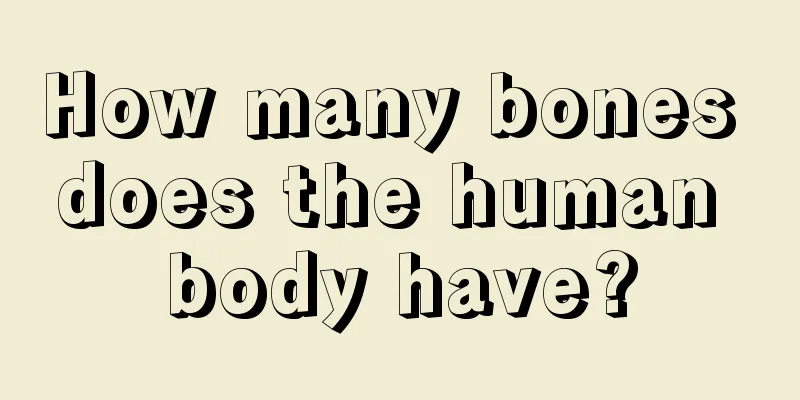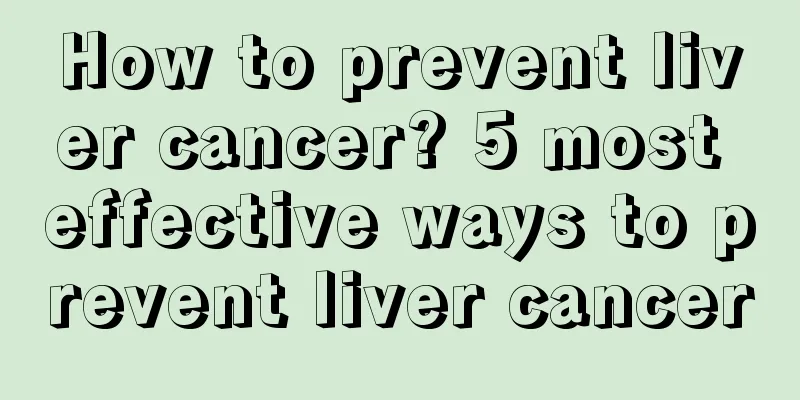How many bones does the human body have?

|
Bones play a very important role in our body and are also a relatively complex tissue. The largest function of the body is to support the entire body. Both the head and the feet have bones. Therefore, if there is any problem with the bones, it will cause great harm and impact to the human body, so everyone can learn some common knowledge about bones. So, how many bones does the human body have? An adult has a total of 206 bones, which are divided into four parts: skull, trunk bones, upper limb bones, and lower limb bones. But children have more bones than adults. Because: Children have five sacrums, which merge into one when they grow up. Children have 4 to 5 coccyx bones, which merge into one as they grow up. Children have two iliums, two ischial bones and two pubic bones, which merge into two hip bones in adults. All adding up, children have 11 to 12 more bones than adults, that is 217 to 218 bones. Medical books say that a newborn baby has as many as 305 bones. The longest bone in the human body is the femur, or thigh bone, which usually accounts for about 27% of the body's height. The longest leg bone recorded is 75.9 cm. The stapes in the ear is the smallest bone in the human body. It is only 0.25 to 0.43 cm long. The weight of an adult's stapes is about 1/5 of the body weight, and the weight of a newborn's stapes is only about 1/7 of the body weight. Function The main function of bones is to support and maintain the body shape. Therefore, the skeletons of marine organisms are smaller than those of land animals because the ocean provides buoyancy support. As animals evolved and moved onto land, they began to develop strong bone structures. On the other hand, bones also provide muscle attachment surfaces, helping muscles to move through joints. Bones also provide protection for internal soft tissue structures. The exoskeleton wraps the entire body and houses all organs, providing a high degree of protection, but it makes movement inconvenient and limits the size of the organism, so it is only found in lower organisms. Higher organisms have endoskeleton, which, although not as protective as exoskeleton, can still protect some important organs, such as the brain, spinal cord and heart, and are easy and fast to move and larger in size. Some endoskeleton structures also have the ability to produce blood cells within the red bone marrow. Protective function: Bones can protect internal organs, such as the skull protects the brain; the ribs protect the chest cavity. Supporting function: Bones form the skeleton and maintain body posture. Hematopoietic function: The bone marrow produces blood cells through hematopoiesis in the medullary cavity of long bones and the spaces between spongy bones. Storage function: Bones store important minerals for the body, such as calcium and phosphorus. Motor function: Bones, skeletal muscles, tendons, ligaments, and joints work together to generate and transmit force to move the body. Most bones can perform all of the above functions to some extent, but some bones are only responsible for a few of them. For people in real life, there are not only differences between men and women in physiological functions, but also obvious differences in bones. The same is even more obvious for the elderly and children, and those who didn’t understand it before will no longer feel ignorant. The above article has introduced in detail how many bones there are in the human body. If you don’t understand, you can take a closer look. |
<<: How to tell if the bone line has healed
>>: How to choose an anti-UV umbrella
Recommend
Can mild tics in children heal themselves?
The incidence of tics is relatively high, and the...
How to be energetic the next day after insomnia?
Insomnia is a very uncomfortable and helpless thi...
Can lemon water be used as a facial mask?
Lemon is a very popular food ingredient. It can n...
Is it good to drink goat milk after gastric cancer surgery
Goat milk is relatively comprehensive in nutritio...
Can hereditary skin cancer be cured?
Skin cancer is a treatable disease, but what we n...
Effects and hazards of edible alkali
We are all familiar with edible alkali. Mothers a...
Hair dryer radiation
When it comes to the radiation from household app...
Can I use toothpaste with an electric toothbrush?
Many people should have come into contact with el...
What diseases should we be alert to when we have itching all over the body
The skin is the largest organ in our body. It pla...
Cavitary tuberculosis with hemoptysis
Most people may think that there is only one type...
The difference between heparin calcium and heparin sodium
Medicines are divided into prescription drugs and...
Characteristics of Crohn's anal fistula
Crohn's disease is an intestinal disease of u...
Consequences of timing belt breakage
We know that the main source of power for a car t...
Eat more of these six foods to prevent hair loss
Hair loss is quite common in daily life. If hair ...
The best way to fix a fish bone stuck in your throat
Friends who like to eat fish will inevitably have...









